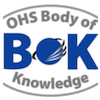Chapter Resources
Chapter 16: Work-related Musculoskeletal Disorders
Abstract
Musculoskeletal disorders are the world’s leading contributors to disability, and work-related
musculoskeletal disorders (WMSDs) are responsible for more than a third of Australian
workers’ compensation claims. This chapter presents information about the nature,
causation and management of WMSDs. The aim is to enable generalist OHS professionals
to take a holistic, participative and evidenced-based approach to WMSD prevention. The
chapter includes a multifactorial systems model to assist in the assessment of physical and
psychosocial WMSD risks and design of risk controls, and a hierarchy of control for WMSD
interventions.
Keywords: Musculoskeletal disorder, sprain, strain, manual handling, biomechanics, psychosocial
hazard
First year of publication: 2012
Current Version : 2021
Chapter 16: Work-related Musculoskeletal Disorders
Table of contents
| 1 | Introduction |
| 2 | Historical perspective |
| 2.1 | Australia’s RSI epidemic |
| 3 | Extent of problem |
| 4 | Legislation and standards |
| 4.1 | Legislation |
| 4.2 | Codes and standards |
| 5 | Understanding WMSDs |
| 5.1 | Nature of WMSDs |
| 5.2 | Symptoms and diagnosis |
| 5.3 | Causation |
| 5.3.1 | Physical factors |
| 5.3.2 | Psychosocial factors |
| 6 | Risk Management |
| 6.1 | Hazard Identification |
| 6.2 | Risk Assessment |
| 6.3 | Risk Control |
| 7 | Intervention |
| 7.1 | Design |
| 7.2 | Substitution and engineering controls |
| 7.3 | Administrative controls |
| 7.4 | Personal protective equipment |
| 7.5 | Examples of interventions |
| 7.6 | Implementation |
| 8 | Implications for OHS practice |
| 9 | Summary |
| References | |
| Appendix 1 | Hazard-identification/risk-assessment tools for WMSDs |
Purchase the AUDIO chapter here through AIHS
OR

David Trembearth
BAppSc(Human Movement), DipEd, AdvDipTherMass, GDipErg, GDipOHS(Management), CPE, ChOHSP, FAIHS
Director, David Trembearth Consulting Pty Ltd
For more than 25 years, David has consulted to small industry, government and large commercial
enterprises in ergonomics and human factors. His professional background includes positions in
occupational rehabilitation and injury management, OHS regulation and OHS education. His current
work requires him to manage, implement and evaluate the application of the principles of ergonomics
and human factors to drive change across a diverse range of projects involving new building design,
office refurbishment and innovative design of plant and equipment. He regularly assesses work tasks
and designs safer systems of work to prevent and manage WMSDs. In 2020, David chaired the working
group that developed the HFESA position statement on WMSDs.

Joanne Crawford BScHons, MScEng, PhD, CErgHF
WorkSafe New Zealand Chair in Health and Safety, Victoria University of Wellington, New Zealand
Joanne is a Chartered Ergonomist who moved from the UK to New Zealand in 2020. She has more
than 30 years’ experience working in research, lecturing and consultancy, including at Birmingham
University where she was Program Director for the MSc in Occupational Health, the Institute of
Occupational Medicine in Edinburgh where she led the Ergonomics and Human Factors team, and now
Victoria University of Wellington. Joanne has worked on national and international research projects
focused on WMSDs and ageing and work.
Learning Outcomes
The OHS Body of Knowledge takes a conceptual approach which enables it to be applied in different contexts and frameworks.
To optimise its value for education and professional development learning outcomes have been developed for each technical chapter in the Body of Knowledge.
The learning outcomes as described give an indication of what should be the capabilities of an OHS professional; it is up to those developing OHS education programs, OHS professionals planning their CPD or recruiters or employers selecting or developing people for the OHS function to consider the required breadth vs. depth .
Please read the section on using the learning outcomes before delving into the leaning outcomes of the individual chapters.
The numbers against each learning outcome refer to the chapter number of the BOK download page. No learning outcomes have been developed for the chapters considered introductory or underpinning knowledge (that is chapters 1, 2, 3, 4, 5, 6, 7, 1, .13, 14, 15.)
Resource 1: HFESA & AIHS: OHS Body of Knowledge Work-related Musculoskeletal Disorders Chapter Launch
The OHS Body of Knowledge (OHS BoK) Musculoskeletal Disorders Chapter Launch.
This has been developed as a joint project by the Australian Institute of Health & Safety and the Human Factors & Ergonomics Society of Australia, with input from the Victoria University of Wellington, New Zealand.
As MSDs impact all workplaces, the aim of this launch is to ‘shout out’ about the chapter to all those who practice in work health and safety. We want to promote the importance of a team approach in preventing and managing work-related MSDs.
Presenters:
Wes Wilkinson, President of the Human Factors and Ergonomics Society
David Trembearth, BAppSc(Human Movement), DipEd, AdvDipTherMass, GDipErg, GDipOHS(Management), CPE, ChOHSP, FAIHS
Joanne Crawford, WorkSafe New Zealand Chair in Health and Safety
Stephen Hehir, HFESA President 2018-20, Manager, Safe Design & Safety Consulting, Enterprise Safety, Australia Post
Donna Lee, Certified Professional Ergonomist within the Human Factors and Ergonomics Society of Australia
Celia Antonovsky, HSEQ Manager
David Clarke, CEO, Australian Institute of Health & Safety
Resource 2: Work Related MSD Case Studies
With compliments of

Case studies give valuable insights into the application of knowledge. The OHS Body of Knowledge appreciates the support of Coles in providing access and resourcing the documentation of the case studies.
Case study 1: Customer service checkout
Resource 3: AIHS Webinar: Sit-Stand Desks - Are they worth it?
Organisations over the last couple of years have invested or considered investing in sit-stand desks as a way to combat sedentary behaviour, thus increasing the health and wellbeing of staff. The webinar will present the research of a recently published study and critically examine the efficacy or ‘Advantages/Disadvantages’ of investing in sit-stand desks. There is limited evidence to suggest purchasing sit-stand desks has positive health benefits for those involved. The study presented suggests behavioural based interventions increase physical activity due to software prompts that appear on the user’s computer screen. With work increasingly becoming sedentary, employers need to consider interventions that will combat the associated negative health impacts such as diabetes and heart disease. The webinar will provide a case for purchasing sit-stand desks where behavioural interventions are also implemented such as software prompts.
Learning Outcomes:
Participants will gain an understanding of the:
- Negative health implications involved in sedentary behaviour
- Advantages and disadvantages of purchasing sit-stand desks
- Interaction between sit/stand desks and computer based interventions.
Year: 2019

